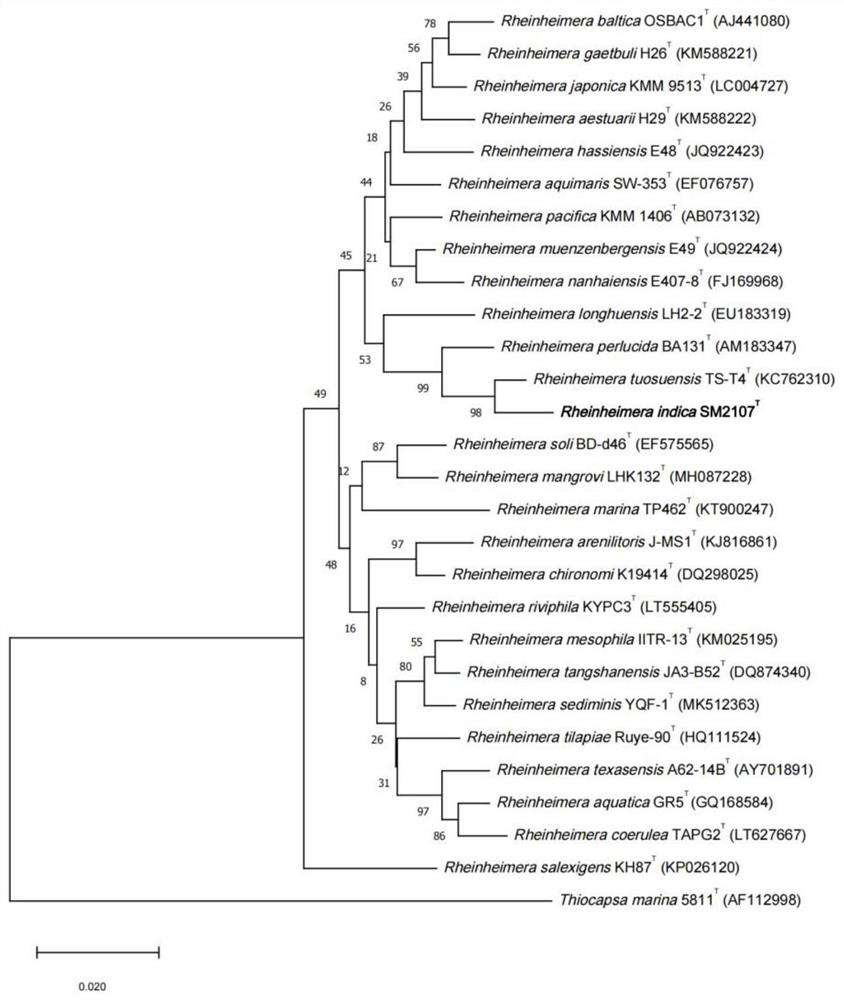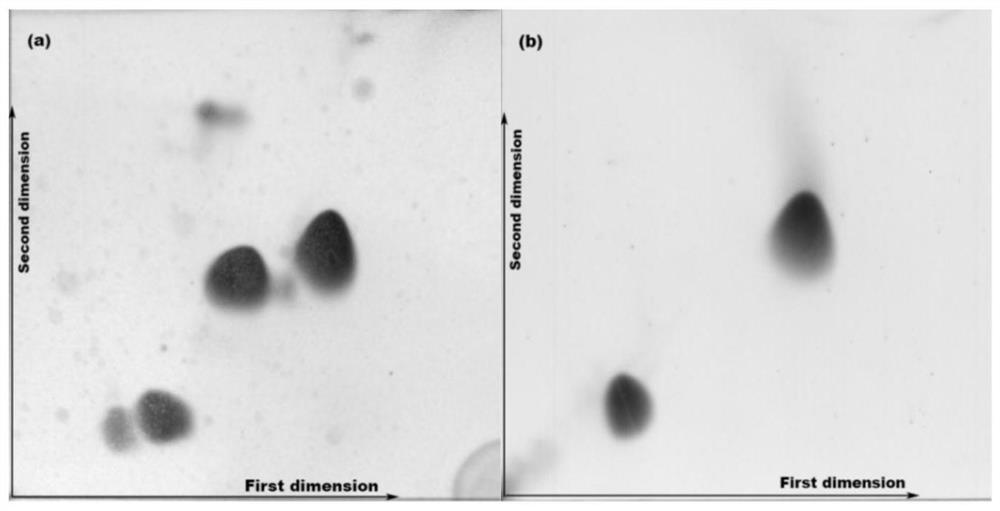Strain capable of degrading collagen and application of strain
A technology of collagen and collagenase, applied in applications, animal/human protein, bacteria, etc., can solve the problems of low enzyme production activity and lack of bacterial strains, and achieve good economic benefits, increase added value, and small molecular weight.
- Summary
- Abstract
- Description
- Claims
- Application Information
AI Technical Summary
Problems solved by technology
Method used
Image
Examples
Embodiment 1
[0038] Screening and isolation of embodiment 1 bacterial strain
[0039] (1) Sample collection
[0040] Sediments were collected from hydrothermal vents (E 49.34627°, S 37.89947°) in the polymetallic sulphide area of the Southwest Indian Ocean, placed in an ice box and brought back to the laboratory.
[0041] (2) Enrichment and domestication
[0042] Draw 500 μL of the sediment sample and add it to 50 mL of the only carbon source liquid medium, and culture it in a shaker at 25 ° C and 180 rpm for one week to obtain an enriched bacterial liquid.
[0043] (3) Screening and isolation of strains
[0044] The bacterium solution enriched in step (2) according to 10 1 , 10 2 , 10 3 , 10 4 , 10 5 Then they were inoculated on the screening medium plate respectively, cultured at 25°C for 48 hours, and further purified and inoculated on the gelatin medium by plate streaking method; then the degraded circles were formed on the gelatin medium. The strains were picked out to obtai...
Embodiment 2
[0049] The identification of embodiment 2 bacterial strain morphology
[0050] The bacterial strain screened and isolated in Example 1 was streaked onto the TYS solid medium plate, and the temperature was cultivated for 24h under the condition of 25°C, and the growth situation of the bacterial colony on the plate was observed and recorded, and the transmission electron microscope (TEM) figure of the bacterial colony morphology ,Such as figure 1 shown.
[0051] Depend on figure 1 It can be seen that the bacterial strain is on the TYS solid medium plate, and the colonies are transparent (yellow in the later stage), round, and the edges are neat, indicating that it is smooth and moist; Gram staining is red, indicating that it is a Gram-negative bacterium; transmission electron microscopy (TEM) In the figure, the cells are rod-shaped, with a length and width of 1.7-2.4×0.5-1.1 μm, single cells, and can secrete a large amount of extracellular polymers.
[0052] TYS solid medium:...
Embodiment 3
[0053] Physiological and biochemical identification of the bacterial strain of embodiment 3
[0054] The physiological and biochemical characteristics of the strains screened and isolated in Example 1 were identified by routine physiological and biochemical experiments and API 20NE and ZYM reagent strips.
[0055] The identification analysis results are shown in Table 1.
[0056] Physiological and biochemical characteristics of the bacterial strains isolated in Table 1 Example 1 and the strains of the genus Rhineheimer's close relatives
[0057]
[0058]
[0059]
[0060]
[0061] In the table: 1 is the isolated bacterial strain of embodiment 1; 2 is bacterial classification Rheinheimera tuosuensis CGMCC1.12461 T ; 3 is strain Rheinheimera longhuensis LH2-2 T ; 4 is strain Rheinheimera aestuariH29 T ; 5 is strain Rheinheimera pacifica KMM 1406 T ; 6 is strain Rheinheimera perlucidaBA131 T . + stands for positive; w stands for weak positive; -, negative reacti...
PUM
| Property | Measurement | Unit |
|---|---|---|
| molecular weight | aaaaa | aaaaa |
Abstract
Description
Claims
Application Information
 Login to View More
Login to View More - R&D
- Intellectual Property
- Life Sciences
- Materials
- Tech Scout
- Unparalleled Data Quality
- Higher Quality Content
- 60% Fewer Hallucinations
Browse by: Latest US Patents, China's latest patents, Technical Efficacy Thesaurus, Application Domain, Technology Topic, Popular Technical Reports.
© 2025 PatSnap. All rights reserved.Legal|Privacy policy|Modern Slavery Act Transparency Statement|Sitemap|About US| Contact US: help@patsnap.com



